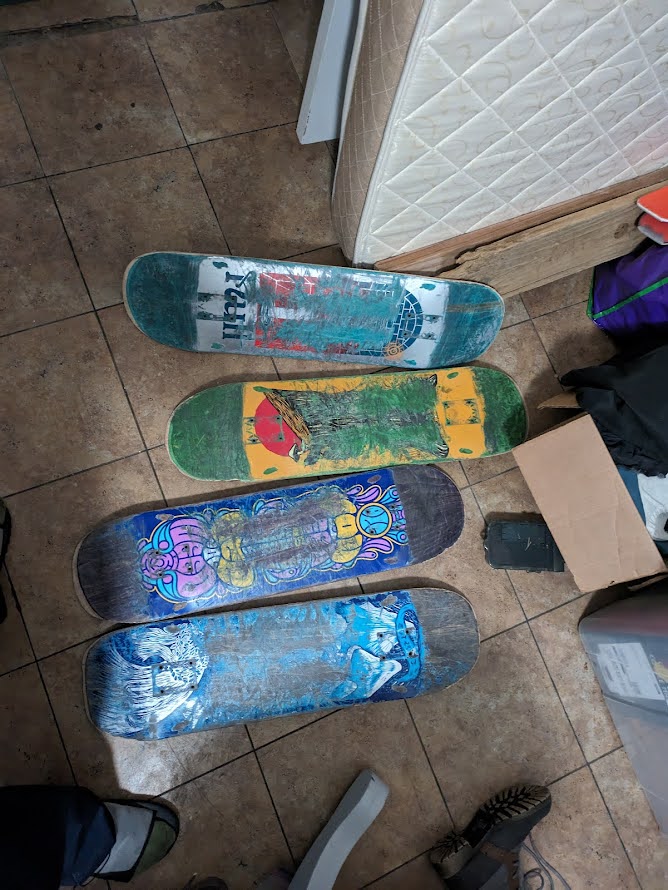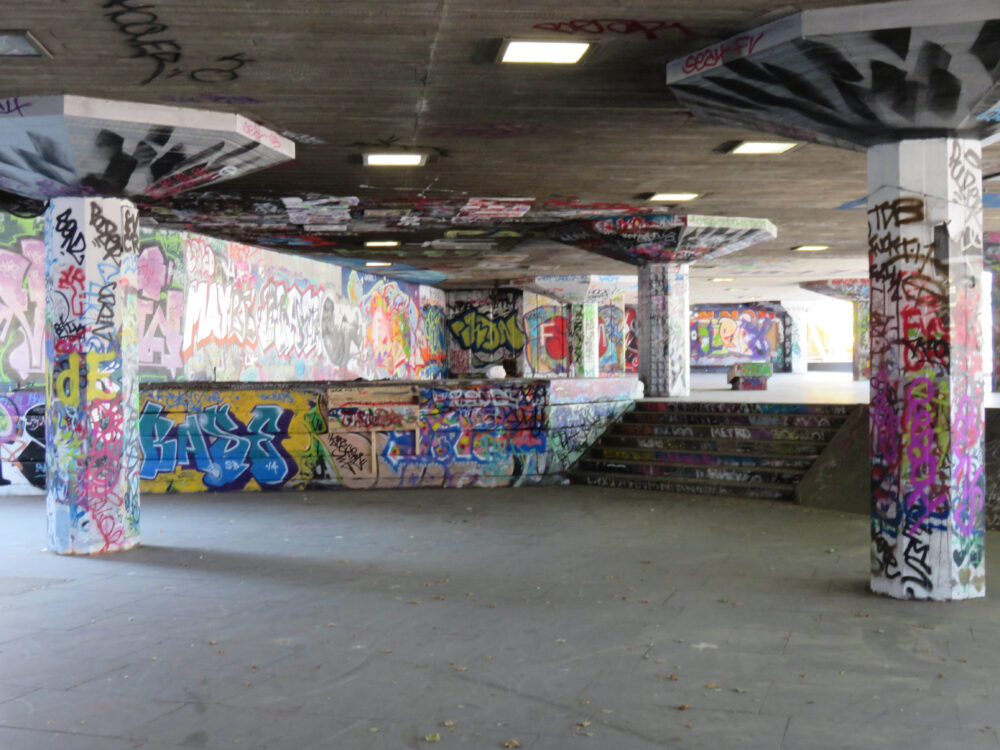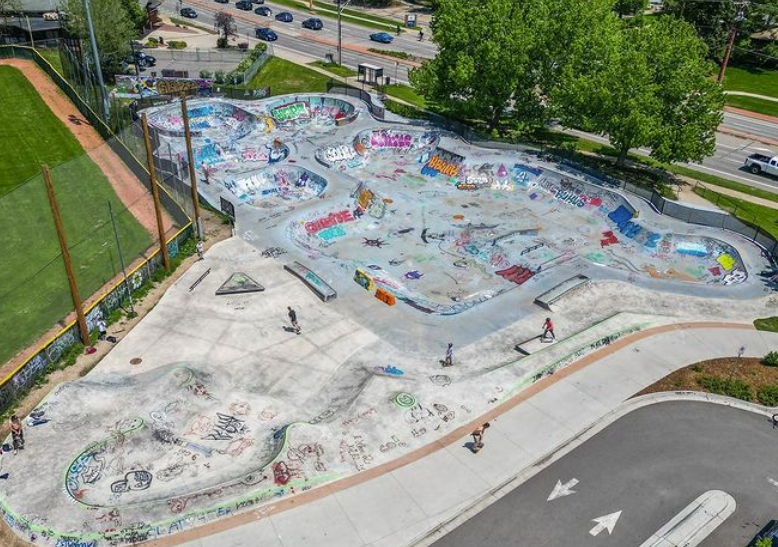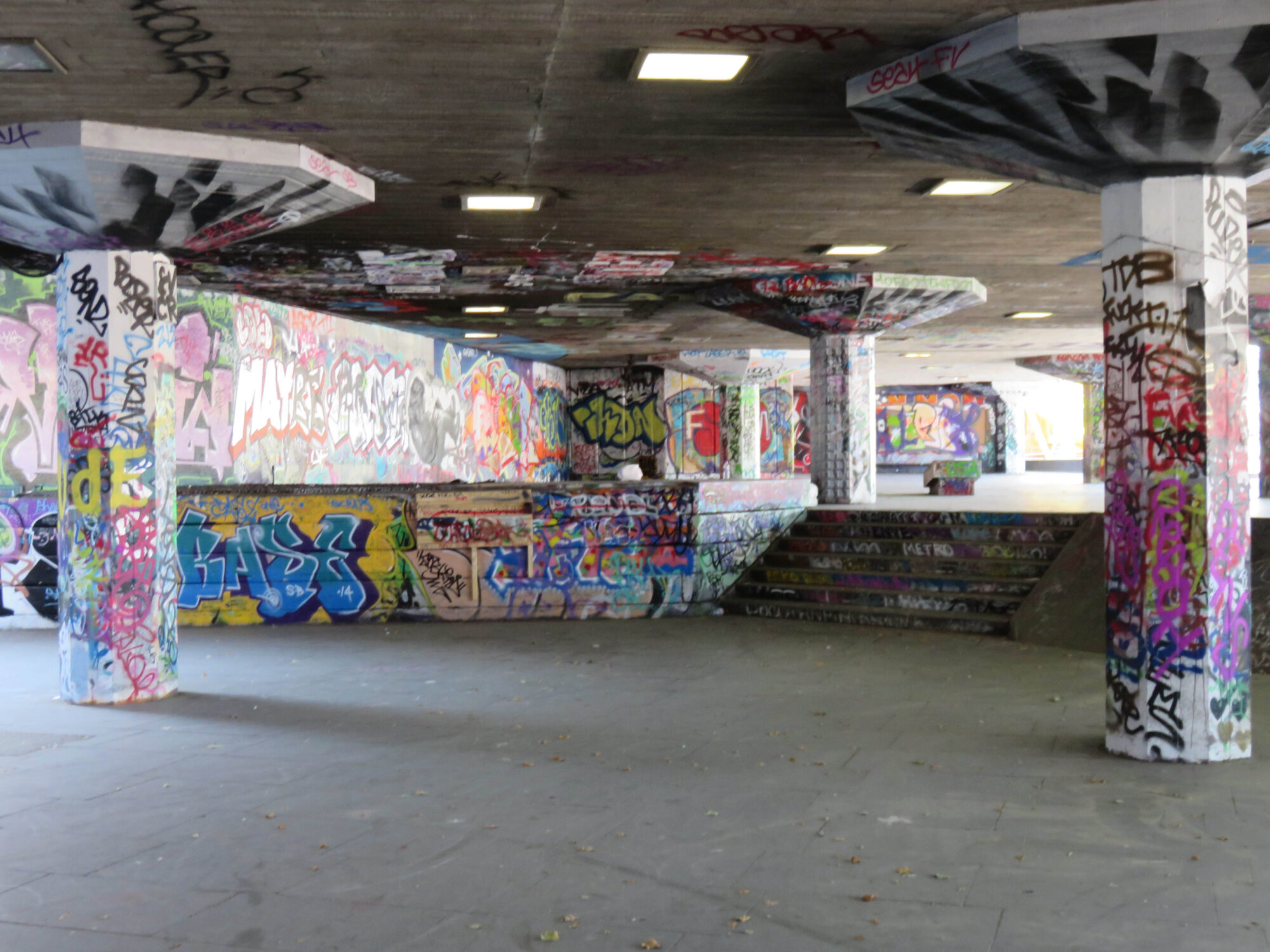My upcycling project will be a shoe rack made from used skateboard decks and reclaimed wood. I have chosen the “Skatepark Graffiti” aesthetic, which is enhanced by the material selection. The shoes will sit on top of the skateboard decks, which is appropriate because this is the same place that the shoes go while skateboarding. I will be spray painting the shoe rack in the same way that skateparks are often graffitied.
I went to the Boulder Recycling Center to find the materials for the project. I initially found some unused 2×4’s, but decided on some old industrial planks that directly fit this aesthetic. I plan to cut these planks to size, build a frame, and attach skateboards to the horizonal beams to create shelves for shoes. The skateboard decks were already in my possession, as I have accumulated many of them over several years of skateboarding. Decks wear out over time and need to be replaced, so this project is a good chance to reuse them. Pictured below are the skateboard decks, along with the wood I found at the Recycling Center.

Also pictured below is Southbend Skatepark in London, a good example of this aesthetic:

Skateparks are often subject to graffiti due to the counterculture nature of both subcultures. Graffiti is also tolerated if not encouraged at skateparks. Graffiti artists collaborate to decorate the walls and ramps of certain skateparks, where the best art lasts the longest as it is less likely to be painted over. Scott Carpenter skate park (also referred to as B-park, short for Boulder Skatepark) used to look similar to this, but when it was remodeled a few years ago it was repainted to light gray. Graffiti artists have been trying to restore the skatepark to its former state, but it takes a while for enough art to accumulate to fully block out the monotonous undercoat of grey paint. Some sections of the park are agreed to be left unpainted, as the spray paint can make the specific type of concrete used in that part of the park too slippery. Pictured below is Scott Carpenter Skate Park:
 Graffiti itself has existed for thousands of years. There are examples of graffiti in archeological remains. Modern spray paint graffiti originated in New York in the early 1960s. The artform became more popular in the 1970s, when people began “tagging” the urban environment in New York City. Graffiti was initially associated with gang activity, where different tags marked the territory of their corresponding gangs. Some consider graffiti an art form, while others consider it an eyesore. It is a unique and well developed aesthetic that should make a functional artefact visually interesting.
Graffiti itself has existed for thousands of years. There are examples of graffiti in archeological remains. Modern spray paint graffiti originated in New York in the early 1960s. The artform became more popular in the 1970s, when people began “tagging” the urban environment in New York City. Graffiti was initially associated with gang activity, where different tags marked the territory of their corresponding gangs. Some consider graffiti an art form, while others consider it an eyesore. It is a unique and well developed aesthetic that should make a functional artefact visually interesting.
Sources:
https://journeyforevermag.com/typesofgraffiti


5 Comments. Leave new
[…] Upcycling Project Aesthetic: Skatepark Graffiti […]
Hey Alex, nice up-cycle project idea! I find graffiti an interesting art form and one in which can be used to create many aesthetics. I was wondering if you have any past experience with spray-painting or if it will be new to you for this project?
I have a small amount of experience with spray painting, but it was a long time ago. I am going to have to consult some graffiti artists for this one I think! (I have some people in mind.)
Hi Alex!
I think you have a really interesting concept for your project. It is a creative idea to use skateboards, a place where you normally put your feet, and use them to create a place for your shoes. Very clever! Your concept for the construction seems very sound and the skateboard decks will create an excellent leveled effect. On the topic of graffiti, do you have an idea of what your composition may be? I know graffiti can be abstract or well thought out. Do you have an idea of what direction you will head in with your artwork?
Thanks! I am going to try to imitate what I see at the skatepark, which is a sort of hodge podge of different overlapping tags. I am going to try to fully cover the wood with spray paint and keep tags varied and distinct.